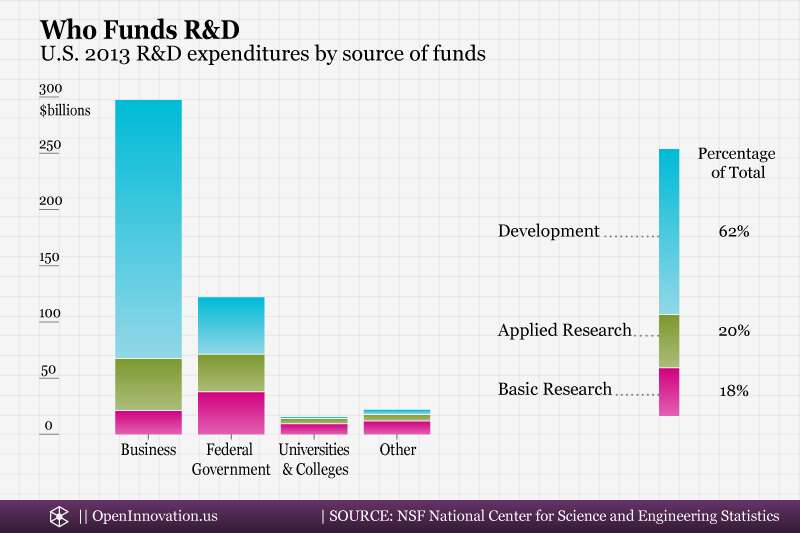
The 7 Mistakes that Undermine Your Success with External Innovations
By Nadia Carlsten | On February 22, 2016
As the concept of Open Innovation continues to gain popularity in academic and management circles alike, more companies are interested in bringing-in external innovations to maintain a leading position or gain an edge over the competition. Some firms adopt Open Innovation to replenish product pipelines, others to collaborate more productively with suppliers, and others even to innovate with customers. Whatever the objective is for using open innovation however, results cannot be taken for granted.
Few would argue with the fundamental reasons why firms need to be more open nowadays. Knowledge is more widely dispersed, more diverse entities play a role in R&D, and innovative ideas and technologies are likely to be available outside of the boundaries of any firm, capable though it may be. What is less obvious is the implication for firms looking to take advantage of this new landscape: in order to be successful in the open innovation paradigm, firms have to develop new competencies. In particular, firms have to become good at identifying, acquiring, and exploiting these ideas, technologies, and intellectual property assets that originated from external sources if they are to profit from them.
The first capability required for benefiting from external innovation is the ability to find the right external sources to tap into. Firms have to become adept at identifying useful external innovations, whether they are in the form of a supplier’s idea, a technology being developed in a university research lab, or a patent in a competitor’s portfolio. Recognizing external opportunities is no easy task, it demands a keen awareness of internal capabilities as well as the ability to evaluate and filter multiple opportunities to find the right one. While this is a challenging process, firms are generally becoming better at sourcing external innovations, and a cottage industry of intermediaries and technology scouts is available to help navigate it.
The second requirement, which is addressed less often, is the ability of the firm to integrate external innovations with internal activities. Even more so than sourcing, this is a critical capability for companies pursuing open innovation, as it goes to the heart of how they will profit from it. Because all firms are roughly on equal footing when it comes to being able to access external innovations, a particular firm must somehow exploit the external inputs more effectively than others in order to gain a competitive advantage. Academics call the ability of firms to “recognize the value of new, external information, assimilate it, and apply it to commercial ends” absorptive capacity.1 In practice, it means that successful firms will be those that develop better processes for integrating and utilizing external inputs.
Leveraging external sources of innovations is challenging for most companies, but to get the most out of your open innovation activities, it’s imperative to avoid the following mistakes:
Underestimating the NIH problem at your firm
Internal resistance to innovations that originate from outside the firm, termed the “Not-Invented-Here” syndrome, is a major problem when undertaking inbound open innovation activities. While NIH is especially prevalent in organizations used to being technology leaders, all firms need to be mindful of current culture and incentive systems, as they are often barriers to implementation of external innovations.Not understanding your development process
Useful external innovations seldom arrive at your doorstep fully formed, there is usually a lot more that needs to be done for them to become valuable for your company. External ideas will need to be developed further into product concepts, and licensed patents will require developing knowhow to practice the technology and integrate it with others. Make sure you consider the additional work that will need to be done before insourcing them.Not being crystal clear what your business model is
First, the choice of external technology and its implementation strategy must be aligned with the business model. Before obtaining an external technology, also make sure you have the complementary assets necessary to extract value from it. Not considering your value chain, sales channels, etc., is the surest way to end up acquiring “cool” technologies or IP that you can’t profit from.Not having a strategy for Open Innovation
Consider what is driving you to bring in external innovations. Are you looking to access technologies and capabilities not available inside your company? Do you have R&D capacity limitations? Is insourcing the technology more cost effective than developing it in-house? All these are valid reasons to consider inbound open innovation, but they require different approaches.Thinking you don’t need in-house R&D
Open Innovation is not an excuse to cut internal R&D budgets. On the contrary, OI can make internal R&D more strategically valuable, and should be viewed as a complement rather than a replacement. For one you will still need researchers and engineers to make the external technology work for your particular requirements. Research has also made it clear that R&D capabilities enhance the ability of firms to find, evaluate and assimilate external technology.Being unprepared for organizational change
Developing a process to acquire external innovations may require some companies to reorganize. In addition, the most valuable external ideas or technologies are unlikely to fit into your nicely defined business lines. At the very least, you may need to put together a team to develop an external innovation, or fund it outside the usual resource allocation process.Not involving the right people early enough
Who participates in the process is almost as critical as the process itself. Identifying and involving people who will have to play a role in implementing the external innovation ensures that it will be well supported and assimilated internally. Don’t shut out of the process people who have the power to shut down the project later.
How firms integrate external innovations is harder to observe than how they access new sources of innovation, but overlooking this crucial part would prove a costly mistake. No longer is “doing Open Innovation” enough of a differentiator. The firms that will win the game are those that invest in developing new competencies and in becoming the best at integrating internal and external innovations.
Notes
- Cohen, Wesley M., and Daniel A. Levinthal. “Absorptive Capacity: A New Perspective on Learning and Innovation”. Administrative Science Quarterly 35.1 (1990): 128–152. ^







